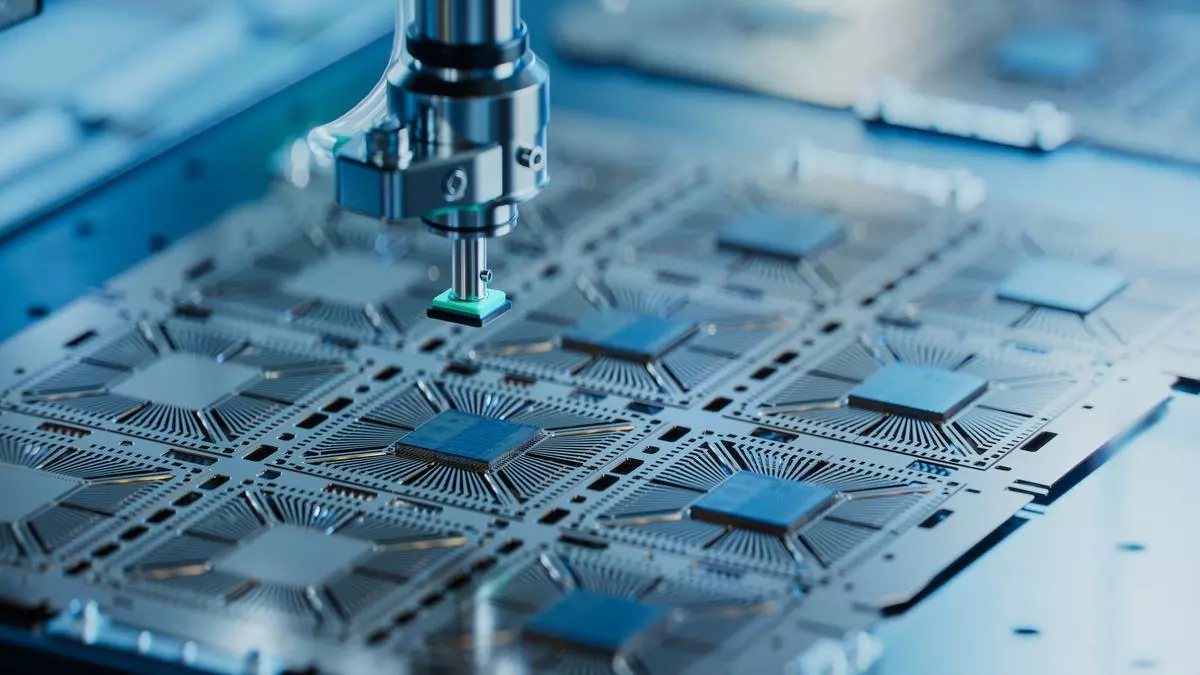Formula 1 Teams are still focused on machine learning over artificial intelligence (AI) but that will change in the next decade, said Michael Taylor, IT Director at Mercedes-AMG PETRONAS Formula One Team. In a one-one-one interview with businessline, Taylor spoke about technology’s role in speeding up F1 cars by the second and his expectations for 2025 from the tech space.
What were the major tech developments this year?
A big tech innovation that my team have been working on with, partnered with the wider organisation is around the next generation of data platform for our track site or event related performance data.
That’s two parts of the organisation coming together to build a foundational technology capability to be utilised primarily in the performance data sphere. We’ve improved lap times by in excess of one second, which is a huge amount of development.
I’m assuming the great buzzword AI also figured in certain places…
Yeah, AI has really come on the scene in the last 12 to 18 months or so. One of my tech architects was messaging me about the latest OpenAI ChatGPT model and showed me some of the statistics. The advancement there is rapid. Now, we’re naturally utilising it like most organisations in areas where it makes sense to use.
So, lots of digital assistant co-pilot type activities like summary of meetings and documentation, knowledge sharing, knowledge articles, co-creation of code. There’s learning being used in engineering areas, but in terms of true AI and F1, I think we’re still very much focused on machine learning more than artificial intelligence. But I have no doubt that that will change in the next few years.
As the model and what we can do with it advances, the evolution from generative AI to AGI, will be key in solving some of our more complex challenges or problems. The deterministic nature of Formula 1 isn’t a perfect fit for generative AI. If you ask a model the same question five times in 10 minutes, you’ll get five different answers.
That doesn’t really help us when the question we’re trying to ask ourselves and solve is “how do we make that car the fastest iteration configuration of itself at a point in time at a specific circuit on a specific weekend throughout the course of the year?” But in the next few years, that situation may change.
What were the challenges in securing against data breaches?
That’s an ever-growing threat. Formula 1 is a very prominent global sport. Mercedes is an unbelievably prominent brand. I think it would be quite challenging for us as an organisation to deal with anything related to that type of threat.
So, we’re always finding ways to secure our systems, balancing security with an element of flexibility. If we become too restrictive, there’s a risk that we’ll limit innovation or a very creative people’s opportunity to develop and evolve.
How do you balance innovation against compliance requirements?
Up until 2021, prior to the introduction of the financial regulations, time was probably the currency of Formula 1. Now, the governing body, the FIA, introduced the financial regulations in 2021 to try and level the playing field across the 10 teams and to effectively ensure that anything that we do related to racing fits under a cost cap.
So, our challenge there has been much more about how we comply with the regulations, optimise our setup, configuration and resources and deploy them in the most effective way. We also have the race team and other disciplines like marketing, finance, HR and legal, that we need to provide services and systems to. So, it’s always trying to find the right balance between operational aspects of the role, keeping the business running versus bringing new innovation.
F1 teams harness a lot of data. How do you ensure that this data delivers a competitive edge?
It’s an ongoing challenge. Sensor data is particularly noisy, quite broad, not overly deep. Sensors notoriously will give erroneous data. So it’s balancing and understanding whether the data is correct or not. The data logger on the car is also capturing higher-fidelity data, logging data rates, which we then download and use to analyse.
How we validate the quality of the data is not particularly easy. There’s a data quality group that’s growing now within the organisation, essentially looking at how we optimise the captured data and how we ensure the quality, consistency and repeatability of data.
Formula One is a highly competitive sport and if you’re not improving you’re going backwards. The whole of the organisation is set up thinking constantly about competitive edge in everything that we do, not just the racing side of the organisation. We’re competing for technology partners with other teams and other sports in other industries.
What are some emerging technologies that you’re excited about going forward?
High-performance computing, computational fluid dynamics, one of the key contributors to early aerodynamic development, are still limited to CPU-based solving at the moment through regulation.
However, it looks like we’ll be able to run some of that solving on GPU-based equipment, which will bring up a significant improvement in certain use cases and solves. Also, one of the exciting things we’re going to hopefully deliver in 2025 is potentially a new CFD cluster, probably the last of the CPU iterations.
There’s also the use of AI across the organization in bringing organizational, operational efficiency and effectiveness. I’m hoping that as the models continue to evolve and improve, that we will get to the point where we’re able to directly improve the performance of the car through a combination of human and AI. Still, I think AI is probably at the forefront of whatever happens next over the next 5 or 10 years.
With respect to the partnership with HPE, anything planned for next year? Anything you’re excited about there?
The partnership with HPE has been very strong, running since 2018. We’re in one of the up cycles of the partnership at the moment in terms of new tech and tech investment. HPE are innovating impressively at the moment.
It’s not always possible necessarily to deliver those innovations as and when they’re released, but we’re certainly interested in what they’re doing within the hybrid cloud and private cloud. Obviously, public cloud AI is very interesting to us as an organization, as something we’re hoping to explore more, advancing a bunch of our machine learning models to bring about some additional performance improvement across different aspects of the organization.
Published on December 10, 2024








Leave a Comment